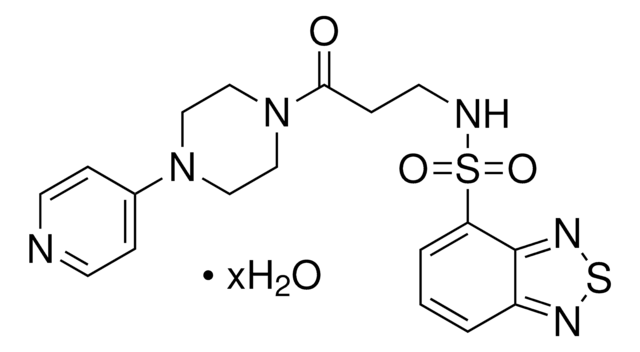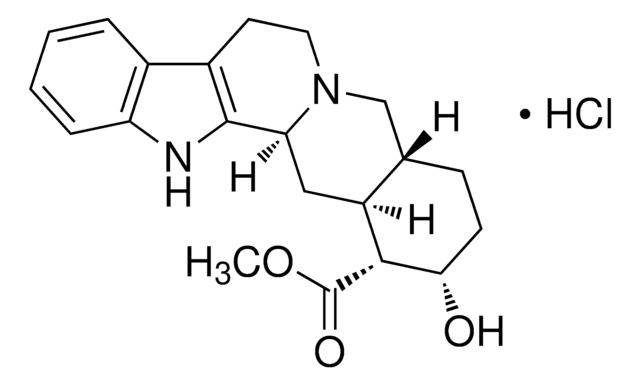P7412
Pirenzepine dihydrochloride
≥98% (TLC), powder
Synonym(s):
5,11-Dihydro-11-[(4-methyl-1-piperazinyl)acetyl]-6H-pyrido[2,3-b][1,4]benzodiazepin-6-one dihydrochloride
About This Item
Recommended Products
assay
≥98% (TLC)
form
powder
color
white
solubility
H2O: 50 mg/mL
SMILES string
Cl[H].Cl[H].CN1CCN(CC1)CC(=O)N2c3ccccc3C(=O)Nc4cccnc24
InChI
1S/C19H21N5O2.2ClH/c1-22-9-11-23(12-10-22)13-17(25)24-16-7-3-2-5-14(16)19(26)21-15-6-4-8-20-18(15)24;;/h2-8H,9-13H2,1H3,(H,21,26);2*1H
InChI key
FFNMBRCFFADNAO-UHFFFAOYSA-N
Gene Information
human ... CHRM1(1128)
General description
Application
- in transactivation of fibroblast growth factor receptor (FGFR).
- as a supplement in cell culture.
- for the stimulation of human fibroblasts
Biochem/physiol Actions
Features and Benefits
Caution
Storage Class
11 - Combustible Solids
wgk_germany
WGK 2
flash_point_f
Not applicable
flash_point_c
Not applicable
ppe
Eyeshields, Gloves, type N95 (US)
Certificates of Analysis (COA)
Search for Certificates of Analysis (COA) by entering the products Lot/Batch Number. Lot and Batch Numbers can be found on a product’s label following the words ‘Lot’ or ‘Batch’.
Already Own This Product?
Find documentation for the products that you have recently purchased in the Document Library.
Customers Also Viewed
Articles
DISCOVER Bioactive Small Molecules for Neuroscience
Our team of scientists has experience in all areas of research including Life Science, Material Science, Chemical Synthesis, Chromatography, Analytical and many others.
Contact Technical Service












